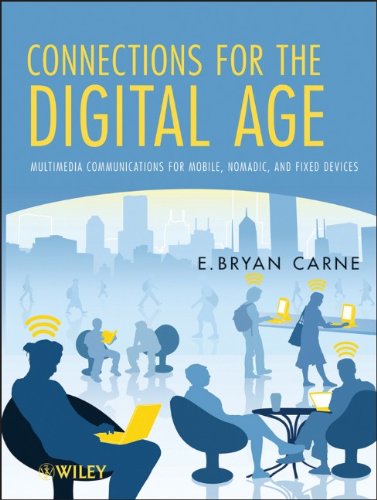

Most ebook files are in PDF format, so you can easily read them using various software such as Foxit Reader or directly on the Google Chrome browser.
Some ebook files are released by publishers in other formats such as .awz, .mobi, .epub, .fb2, etc. You may need to install specific software to read these formats on mobile/PC, such as Calibre.
Please read the tutorial at this link: https://ebookbell.com/faq
We offer FREE conversion to the popular formats you request; however, this may take some time. Therefore, right after payment, please email us, and we will try to provide the service as quickly as possible.
For some exceptional file formats or broken links (if any), please refrain from opening any disputes. Instead, email us first, and we will try to assist within a maximum of 6 hours.
EbookBell Team

0.0
0 reviewsDigital natives—those persons born in the digital age—have an ever-widening range of wireless-enabled devices at their disposal. They are the drivers of multimedia communications, continually seeking out the technologies and distribution channels that best match their needs. This book outlines the changes in telecommunications that are occurring to meet these needs. It addresses the continually increasing requirement to provide connections that make the electronic encounter as natural and convenient as possible, exploring the vast assortment of devices that exist as part of everyday living for digital natives.
Featuring precise diagrams and tables to illustrate the evolving environment, the book begins by describing the competitive interactions of telephone, cable TV, and cellular mobile companies in providing services and content. It outlines the creation of digital multimedia streams and how they are transported, explains what multimedia connections are available, and summarizes the activities of competitors while providing an overview of their markets and customer statistics.
This book uniquely covers wireline, optical fiber, cable, and wireless access methods, explaining the coding required to create digital streams. It combines ethernet with provider bridging and multi-protocol label switching and highlights the necessity to serve legacy streams. In addition, the book addresses controversial issue: will incumbent communications providers ever overtake Internet as the chief source of digital feeds and popular contents?
Featuring extensive references and a glossary of multimedia terms, Connections for the Digital Age is written for digital natives and other persons with an interest in multimedia communications; industrial, commercial, and financial managers; engineers; software professionals and Internet specialists; and students at technical schools and universities.